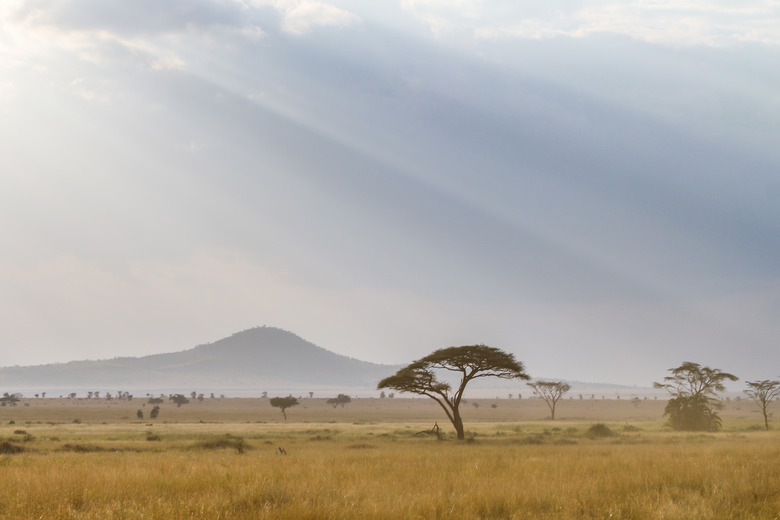What Are The Trophic Levels In The Savanna?
Savannas are diverse biomes located between rain forests and deserts on either side of the equator — usually, Africa's Serengeti Plain and other grasslands come to mind. The savanna is known as the cerrado in Brazil, the llanos in Venezuela and Colombia and the pine savanna in Belize and Honduras. Although the specific plant and animal species and their diversity differ among geographic regions, the basic trophic structure of the savanna remains the same.
Primary Producers
Primary Producers
Savannas are dominated by tall grasses, which are the primary producers that convert energy from the sun and minerals and nutrients from the soil into the biomass that forms the basis of the food web. In the savanna, the lowest trophic level often includes shrubs and sparse trees, including palms, pines and acacias.
Primary Consumers
Primary Consumers
Primary consumers abound in the savannas, where more than a dozen species may coexist peacefully, each with their own niche. These herbivores include giraffes; antelopes; wildebeests; rhinos; elephants; rodents; birds; tortoises; and, in Australia, kangaroos. Herbivores consume plant material and convert the plant energy into a food source for higher trophic levels.
Higher Order Consumers
Higher Order Consumers
Secondary consumers in the savannas include carnivorous species such as lions, leopards, cheetahs, hyenas, jackals, wild dogs, snakes, lizards and birds of prey. Tertiary consumers are those carnivores, such as lions, which prey upon other carnivores as well as herbivores.
Scavengers and Decomposers
Scavengers and Decomposers
Scavengers and decomposers also play important roles in the trophic system of the savanna biome. Scavengers such as vultures, buzzards, hyenas and termites are abundant and form an integral part of the nutrient cycling system. Decomposers follow the scavengers, as insects, mushrooms and bacteria break down plant and animal remains and return the nutrients and minerals to the soil.
Cite This Article
MLA
Mac, Emmalise. "What Are The Trophic Levels In The Savanna?" sciencing.com, https://www.sciencing.com/trophic-levels-savanna-8659442/. 22 November 2019.
APA
Mac, Emmalise. (2019, November 22). What Are The Trophic Levels In The Savanna?. sciencing.com. Retrieved from https://www.sciencing.com/trophic-levels-savanna-8659442/
Chicago
Mac, Emmalise. What Are The Trophic Levels In The Savanna? last modified March 24, 2022. https://www.sciencing.com/trophic-levels-savanna-8659442/
